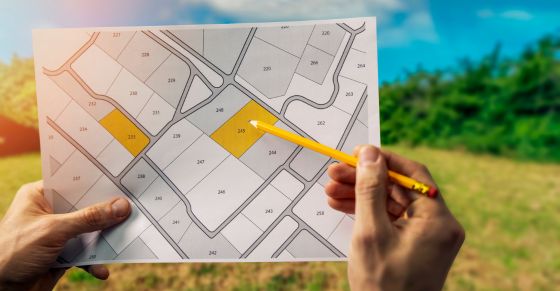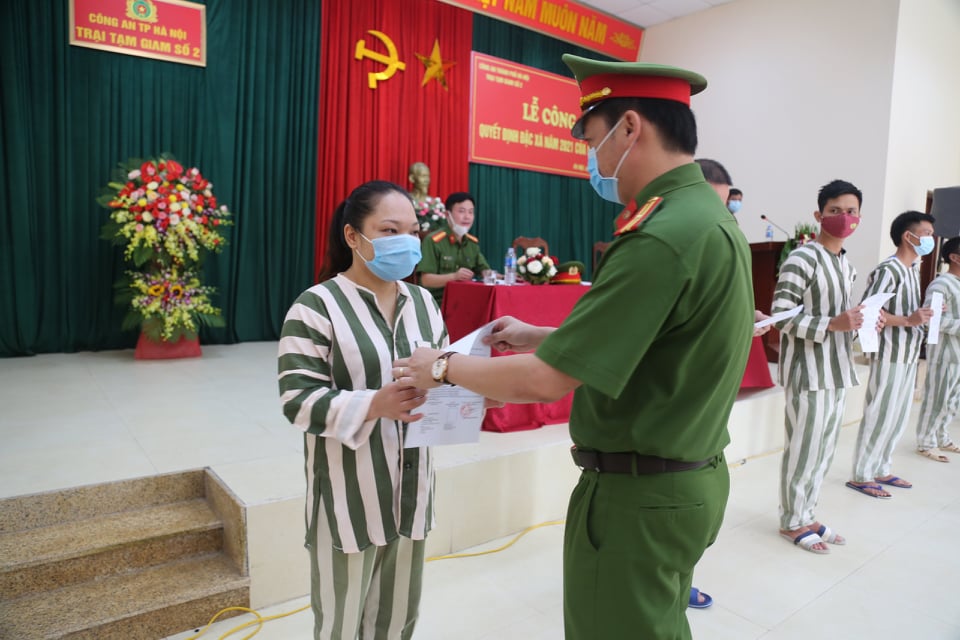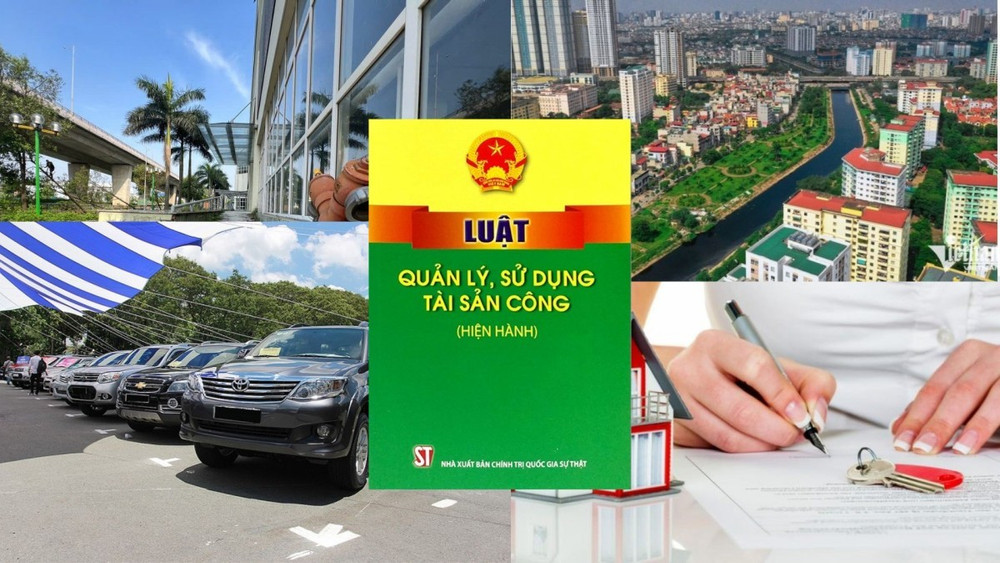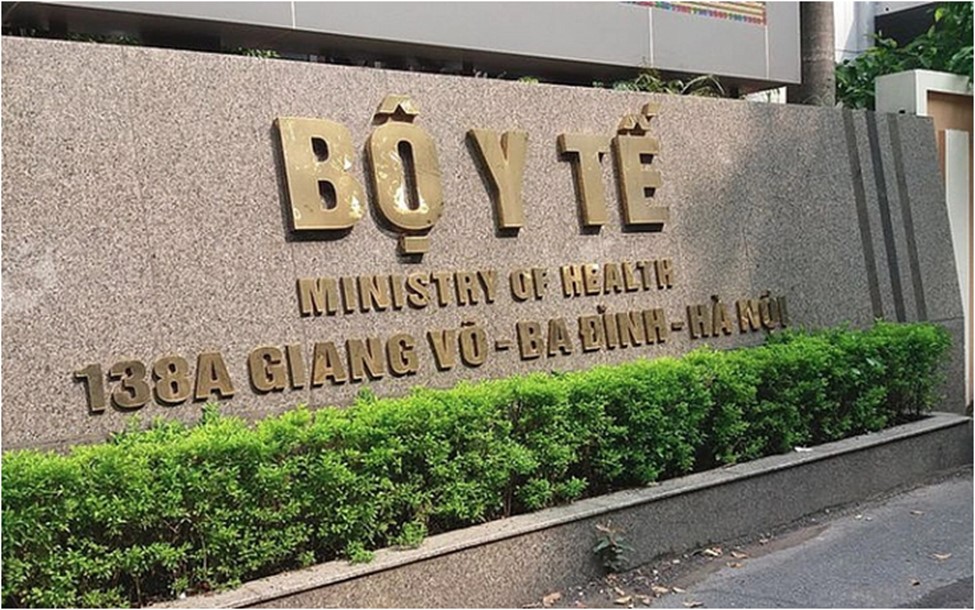Detailed regulations on types of land in the category of non-agricultural land in Vietnam from August 1, 2024
The Government of Vietnam has issued Decree 102/2024/ND-CP, detailing the types of land in the category of non-agricultural land in Vietnam from August 1, 2024

Detailed regulations on types of land in the category of non-agricultural land in Vietnam from August 1, 2024 (Image from the internet)
On July 30, 2024, the Government of Vietnam issued Decree 102/2024/ND-CP guiding the implementation of several articles of the Land Law 2024.
Detailed regulations on types of land in the category of non-agricultural land in Vietnam from August 1, 2024
Article 5 of Decree 102/2024/ND-CP provides detailed regulations on types of land in the category of non-agricultural land in Vietnam, as follows:
Article 5. Detailed Regulations on types of land in the category of non-agricultural land in Vietnam
- Residential land means land used for housing and other purposes serving life within the same parcel. Residential land includes homestead land in rural and urban areas. Specifically:
+ Residential land in rural areas is homestead land within the administrative boundaries of a commune, excluding homestead land that undertakes urban development projects as per the urban and rural system planning but remains within the commune's administrative boundaries;
+ Residential land in urban areas is homestead land within the administrative boundaries of a ward, commune-level town, and homestead land within the commune's administrative boundaries that has undertaken urban development projects as per the urban and rural system planning.
- Land for constructing agency headquarters is land used for building headquarters of the Communist Party of Vietnam, state agencies, the Vietnam Fatherland Front, political-social organizations, political-social-professional organizations, social-professional organizations, social organizations, other organizations established under the law and assigned duties, and regularly supported funds by the State, excluding land for constructing agency headquarters of public service providers associated with enterprise facilities stipulated in Clause 4, Article 5 of Decree 102/2024/ND-CP.
- National defense and security land means land used for campsites, working headquarters; military bases; national defense fortifications, special national defense and security structures; airports, ports, heliports, and other facilities serving flight operations at airports and heliports for the military, police; military communications, security structures; industrial, scientific, technological, cultural, and sports structures directly serving national defense and security; storage facilities for the people's armed forces; shooting ranges, training fields, weapon testing grounds, weapon disposal sites; training centers, training and professional development centers, rest homes, convalescent homes, rest and rehabilitation facilities, health facilities for the people's armed forces; official housing for the people's armed forces; detention facilities; compulsory education institutions; reform schools, labor, vocational training, and reeducation centers for inmates, trainees, and students managed by the Ministry of National Defense and the Ministry of Public Security.
- Land for building public service facilities includes:
+ Land for building cultural facilities is land for cultural structures, including conference centers, theaters, cultural houses, cultural centers, cultural palaces, clubs, cinemas, circus tents; symbolic and artistic structures (outdoor monuments, welcome gates, squares, memorial markers, etc.); children's palaces, children's houses, youth activity centers, museums, exhibition houses, libraries, literary creation centers, artistic creation centers, art display houses, headquarters of art troupes, and other cultural facilities established or permitted by the State to operate.
+ Land for building social facilities is land used for social service establishments, including centers providing social work services, social protection centers; treatment-education-labor-social centers; convalescent centers for people with contributions; child assistance institutions; elderly care facilities, facilities for people with disabilities, facilities for children in special circumstances; child nurturing facilities for disadvantaged children, and other social service establishments established or permitted by the State to operate.
+ Land for building healthcare facilities is land used for healthcare structures, including hospitals, maternity homes, healthcare centers, health stations, and other healthcare facilities; rehabilitation centers, elderly care within healthcare, preventive medicine facilities; population facilities; testing, scientific, and technological research facilities in the healthcare field; animal husbandry land, land for growing medicinal plants serving healthcare purposes; standard inspection, testing facilities; forensic examination facilities; drug production facilities; medical device production facilities; treatment facilities for people with HIV/AIDS, people with mental illnesses, and other healthcare facilities established or permitted by the State to operate; including areas used for offices, businesses, services such as pharmacies, restaurants, guesthouses for patients' relatives, fee-based parking lots within the scope of a healthcare facility, excluding healthcare establishments managed by the Ministry of National Defense and the Ministry of Public Security.
+ Land for building educational and training facilities is land used for educational and training structures, including preschool education facilities, general education facilities, continuing education centers, specialized schools, higher education institutions, vocational education institutions, and other educational and training institutions established or permitted by the State to operate; including areas for offices, dormitories for students, places for selling school supplies, restaurants, parking lots, and other functional areas within the scope of an educational and training institution, excluding educational and training institutions managed by the Ministry of National Defense and the Ministry of Public Security.
+ Land for building physical training and sports facilities is land for structures serving physical training and sports activities established or permitted by the State to operate, including sports complexes, training and coaching centers for athletes, sports centers, stadiums; golf course paths, practice areas in golf courses and green systems, water surfaces, landscapes of golf courses, structures serving the management, operation, exploitation, use, business of golf courses (excluding accommodation, services for golfers); swimming pools and other physical training and sports training grounds, including areas for offices, ticket selling points, souvenir shops, sports equipment sales, parking lots, and other facilities serving physical training and sports within the scope of a physical training and sports facility; excluding physical training and sports establishments managed by the Ministry of National Defense and the Ministry of Public Security.
+ Land for building scientific and technological facilities is land for structures serving activities in science, technology, and innovation by organizations such as: research, development, scientific and technological service organizations; startup innovation support organizations; technology incubation facilities, scientific and technological enterprise incubation centers; innovation centers; startup assistance centers; laboratories; scientific research facilities of scientific and technological enterprises; science, technology parks; science museums; measurement systems; information, scientific, and technological statistics infrastructures; co-working spaces for startup innovation, and other scientific and technological establishments established or allowed by the State to operate.
+ Land for environmental facilities is land used for structures serving environmental protection activities, biodiversity conservation, including environmental incident prevention and response structures, environmental monitoring structures; biodiversity conservation monitoring structures and other environmental protection structures.
+ Land for building hydrometeorological facilities is land used for hydrometeorological structures, including hydrometeorological stations, climate change monitoring stations, and other hydrometeorological structures.
+ Land for diplomatic facilities is land for building diplomatic premises, including diplomatic representative agencies (embassies), consular agencies (consulates), representative offices of international organizations in Vietnam, representative offices of foreign diplomatic organizations, non-governmental organizations with diplomatic functions; diplomatic corps facilities managed by the State.
+ Land for other public service facilities is land for public service structures according to the law not included in points a, b, c, d, e, g, h, and i of Clause 4, Article 5 of Decree 102/2024/ND-CP.
- Non-agricultural production and business land includes:
+ Land for industrial areas, clusters is land for industrial production structures, craft industry, concentrated information technology zones; including worker accommodation in industrial zones, service structures for industrial production, craft industry, infrastructure structures, and other facilities in industrial zones, clusters, concentrated information technology zones.
+ Commercial, service land is land for commercial, service business establishments, and other structures for commerce, service businesses; lodging, services for golfers (excluding golf course paths, practice areas in golf courses and green systems, water surfaces, landscapes, structures serving the management, operation, exploitation, use, and business of golf courses); headquarters, representative offices of economic organizations; land used for warehouses, yards for storing goods of economic organizations outside the production area; bathing beaches associated with business, service establishments.
+ Land for non-agricultural production facilities is land for non-agricultural, industrial, craft production structures not specified in point a of this clause, including headquarters and other structures serving production or employees attached to the production facility; land used for yards, warehouses, and yards associated with the production area.
+ Land used for mining activities is land used for exploration, exploitation, or exploitation associated with mineral processing, land for constructing structures serving mining activities, including working houses, mid-shift rest houses, and other facilities for staff associated with the mining area and safety corridors during mining activities as licensed or authorized by competent state agencies in accordance with the law on minerals, investment law, and other relevant laws.
- Land used for public purposes includes:
+ Land for transportation structures is land for transportation structures, including highways, roads, urban roads, rural roads (including detours, rescue roads, and field roads used for general travel); stopping points, passenger pickup and drop-off points, toll stations, warehouse structures, car garages, parking lots; ferry terminals, bus stations, toll booths, rest stops; various railway types, railway stations; metro lines; various bridges, tunnels serving transportation; inland waterways, maritime structures; airports, including land for building state agency headquarters for regular operations and land for building airport infrastructure, runways, and aircraft parking areas; cable car lines and cable car stations; fishing ports, inland ports; premises, offices, business service facilities within stations, ports, and bus stations; safety corridor protection structures for transportation structures where land must be acquired for clearance; other structures serving transportation and other facilities, structures according to transportation regulations.
+ Land for hydraulic works is land for constructing dikes, embankments, sluices, dams, spillways, hydro tunnels, water supply systems, drainage systems, irrigation drainage mainly serving agricultural production, including safety corridor protection structures for hydraulic works where land must be used; headwater hydraulic works including working houses, warehouses, production facilities, maintenance facilities within the scope of hydraulic works.
+ Land for water supply and drainage structures is land for constructing water plants, pumping stations, various types of tanks, water towers, water supply and drainage pipelines; water treatment, sludge, and sewage facilities including working houses, warehouses, production facilities, maintenance facilities for water supply and drainage structures outside industrial clusters, information technology zones, export processing zones, and other production, business zones and other structures as per the laws.
+ Land for disaster prevention and control structures is land for structures serving disaster prevention and control, including dike structures against flooding, drought, saltwater intrusion, erosion, land subsidence, flash floods, lightning; mooring areas for storm shelter for boats, houses combined with evacuation shelters, and other disaster prevention structures.
+ Land with historical-cultural relics, scenic spots, natural heritage sites is land with historical-cultural relics, scenic spots, natural heritage sites that have been ranked or listed by provincial-level People's Committees according to cultural heritage regulations.
+ Land for waste treatment structures is land for constructing waste transfer stations; landfill sites; integrated treatment zones, treatment facilities, hazardous waste treatment facilities including working houses, warehouses, production facilities, maintenance facilities, and other structures serving waste treatment according to the laws.
+ Land for energy structures, public lighting is land for constructing power plants and auxiliary structures of power plants; structures for dams, embankments, water channels serving hydroelectric plants; power transmission lines and substations; business service, repair, and maintenance structures within the scope of a power plant; public lighting systems; oil and gas extraction platforms, structures for oil and gas extraction, oil refinery plants, gas processing plants, biofuel production plants; crude oil storage facilities, fuel storage, pump stations, pipelines, safety corridor protection structures to ensure technical safety; business service, repair, and maintenance structures within the scope of structures serving oil, gas extraction, oil refinery plants, gas processing plants, biofuel production plants, and other structures, facilities serving energy, public lighting as per the laws.
+ Land for postal infrastructure, telecommunications, information technology (excluding concentrated information technology zones stipulated in point a, Clause 5 of Article Decree 102/2024/ND-CP) is land for constructing houses, stations, antenna masts, cable posts, ducts, tanks, pipes, trenches, technical tunnels, and other related technical infrastructure structures for installing telecommunications equipment and devices for telecommunications services; data centers; including safety corridor protection structures that cannot be used for other purposes; postal operations exploitation systems, and points serving postal services; communal culture post offices; business service, repair, and maintenance structures within the scope of postal, telecommunications, information technology structures.
- Land for traditional markets, wholesale markets is land for constructing markets as per the laws on market development and management.
+ Land for public recreational, community activity areas is land for constructing structures or no structures but identified mainly for public recreational activities, including parks, flower gardens, bathing areas, and other public recreational areas, excluding cinemas, circus tents, theaters, game service structures; meeting structures and other activities suitable to the customs and traditions of local communities.
+ Religious land is land for constructing religious structures, including pagodas, churches, chapels, cathedrals, towers, monks' statues, and memorials belonging to religious establishments; religious education institutions; headquarters of religious organizations, affiliated religious organizations, and other lawful religious structures.
- Belief land is land for constructing belief structures, including communal houses, temples, shrines, family ancestral halls, clan worship houses, statues, towers, and memorials belonging to belief establishments; pagodas not specified in Clause 1, Article 213 of the Land Law 2024, Clause 7 of Article 5 of Decree 102/2024/ND-CP, and other belief structures.
- Cemetery land, funeral home land, cremation facility land; land for storage of ashes is land used for centralized burials, constructing funeral homes, cremation facilities, storage of ashes, and other auxiliary structures for burial, cremation, and storage of ashes.
- Land with specialized water surface is land that includes water surfaces of hydrological objects such as ponds, lakes, lagoons, estuaries, rivers, canals, streams, which have been designated for use purposes other than the primary purpose of aquaculture.
- Other non-agricultural land includes land with structures serving production, business or land allocated, leased, permitted to change use purposes but without structures and not falling under the cases specified at point c clause 7 Article 4 and clauses 1, 2, 3, 4, 5, 6, 7, 8, 9, and 10 Article 5 of the Land Law 2024.
More details can be found in Decree 102/2024/ND-CP, which comes into force in Vietnam from August 1, 2024.
- Key word:
- Non-agricultural land
- land
- Vietnam
- Number of deputy directors of departments in Vietnam in accordance with Decree 45/2025/ND-CP
- Cases ineligible for pardon in Vietnam in 2025
- Decree 50/2025 amending Decree 151/2017 on the management of public assets in Vietnam
- Circular 07/2025 amending Circular 02/2022 on the Law on Environmental Protection in Vietnam
- Adjustment to the organizational structure of the Ministry of Health of Vietnam: Certain agencies are no longer listed in the organizational structure
- Vietnam aims to welcome 22-23 million international tourists in Vietnam in 2025
-

- Number of deputy directors of departments in Vietnam ...
- 15:04, 05/03/2025
-

- Cases ineligible for pardon in Vietnam in 2025
- 14:43, 05/03/2025
-

- Decree 50/2025 amending Decree 151/2017 on the ...
- 12:00, 05/03/2025
-

- Circular 07/2025 amending Circular 02/2022 on ...
- 11:30, 05/03/2025
-

- Adjustment to the organizational structure of ...
- 10:34, 05/03/2025
-

- Notable new policies of Vietnam effective as of ...
- 16:26, 11/04/2025
-
.Medium.png)
- Notable documents of Vietnam in the previous week ...
- 16:21, 11/04/2025
-
.Medium.png)
- Notable documents of Vietnam in the previous week ...
- 16:11, 02/04/2025
-
.Medium.png)
- Notable new policies of Vietnam to be effective ...
- 16:04, 02/04/2025
-
.Medium.png)
- Notable new policies of Vietnam effective from ...
- 14:51, 21/03/2025

 Article table of contents
Article table of contents
